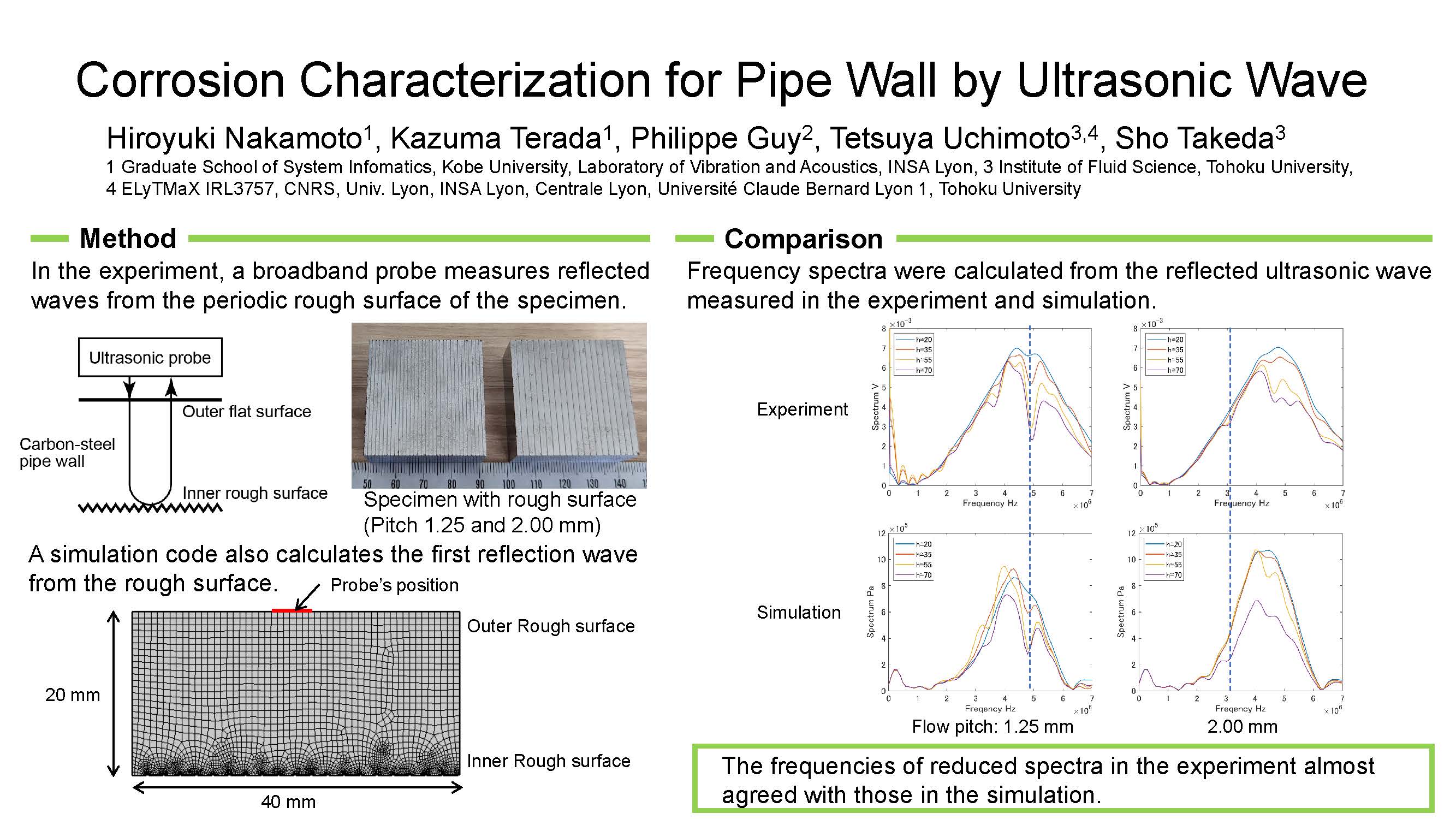Collaborative Research Projects
- Thermal AcTuation and energy hArvesting using MultIphysic alloys
- Nonlinear Bifurcation and Dynamic Mode decomposition for Taylor Vortex in Gap between Rotating Two Cylinders/Cones
- Monitoring eukaryotic cell functions under various hypoxic conditions with microfluidic differential oxygenators
- Coupled Analysis Approach to Integrated Multiphase Energy Systems
- Investigation of a predictive therapeutic response under controlled oxygen condition in cancer patient-derived organoids
- Active Control of Protein Mass Transfer by Membranes with Various Pore Patterns
- Coplanar sensor as solution to detect water uptake on polymer materials
- Multiscale simulation of Carbon electromigration in iron
- Numerical modelling of the particle temperature evolution during cold-spray process
- Stability of jet diffusion flames cofiring with carbon-free ammonia
- Robust Shape optimization of vibro-acoustic cavity
- MACASH (MAgnetostrictive Composites for Application in Sensing and Harvesting)
- Strengthening mechanism of TiC particle reinforced Al matrix composite
- Theory for Electrostriction of PolymeRic Actuator (TEmPuRA)
- Blood flOw Simulation for Medical Applications (BOSMA)
- Atmospheric turbulence affecting airplane investigated by global stability analysis
- Modal approach for extracting flow structure related to the subsonic jet noise generation
- Skyrmion stability under mechanical strains and material deformations
- Finsler geometry modeling of Turing patterns and protoplasmic streaming
- Corrosion characterization for pipe wall by ultrasonic wave
-
Thermal AcTuation and energy hArvesting using MultIphysic alloys
Mickaël LALLART
INSA LyonTATAMI project aims at investigated Multiphysic coupling materials and their application to energy harvesting devices and small-scale actuators. Thanks to a “material and system by design” approach, novel microgenerators and actuators are developed. In that view, novel thermal energy harvesters as well as actuators (for instance thermal protection devices) have been developed.
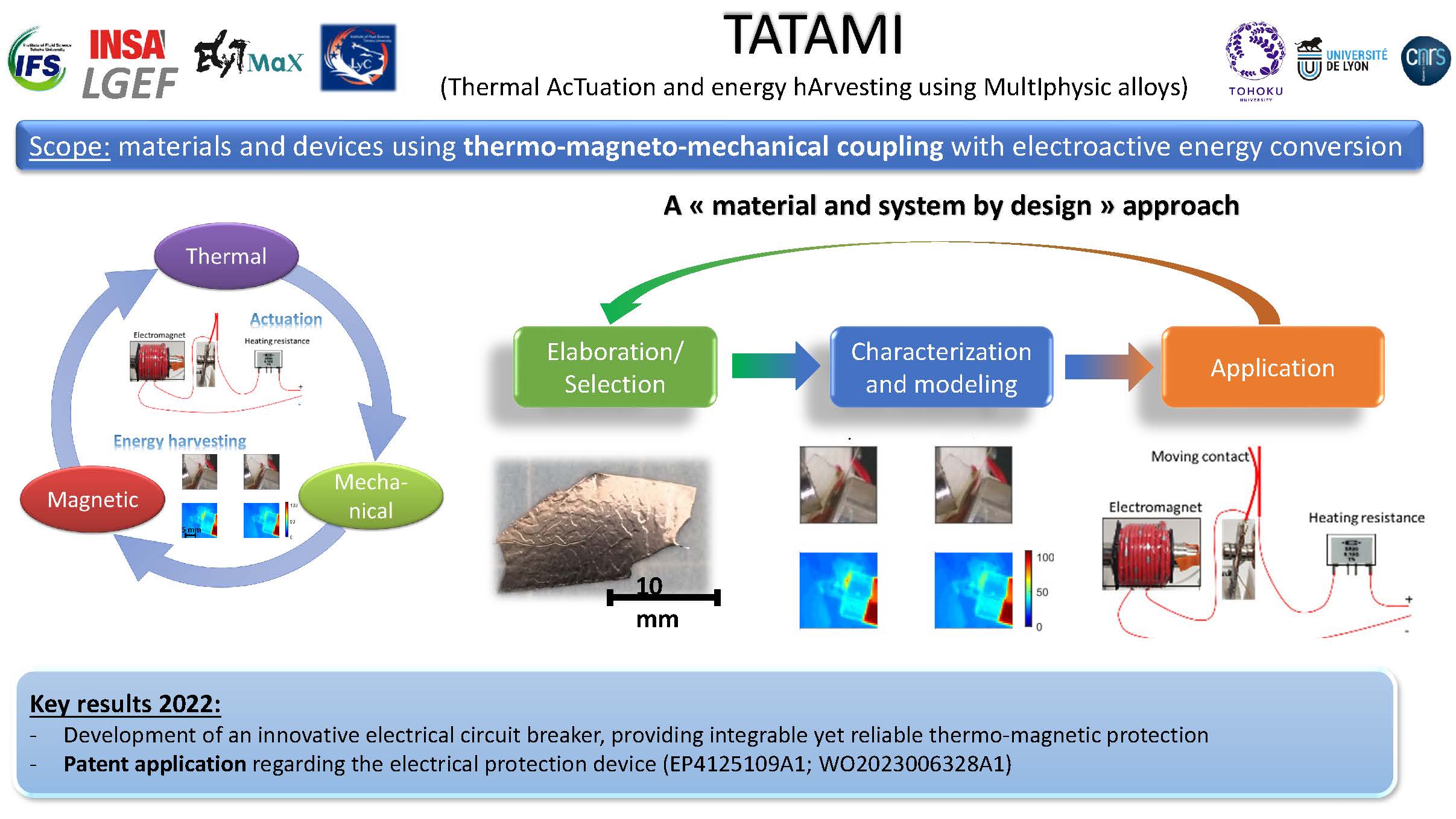
-
Nonlinear Bifurcation and Dynamic Mode decomposition for Taylor Vortex in Gap between Rotating Two Cylinders/Cones
Takahiro ADACHI
Akita UniversityNumerical calculation by spectral Element methd, Linear stability analysis and Dynamic mode decomposition are carried out.
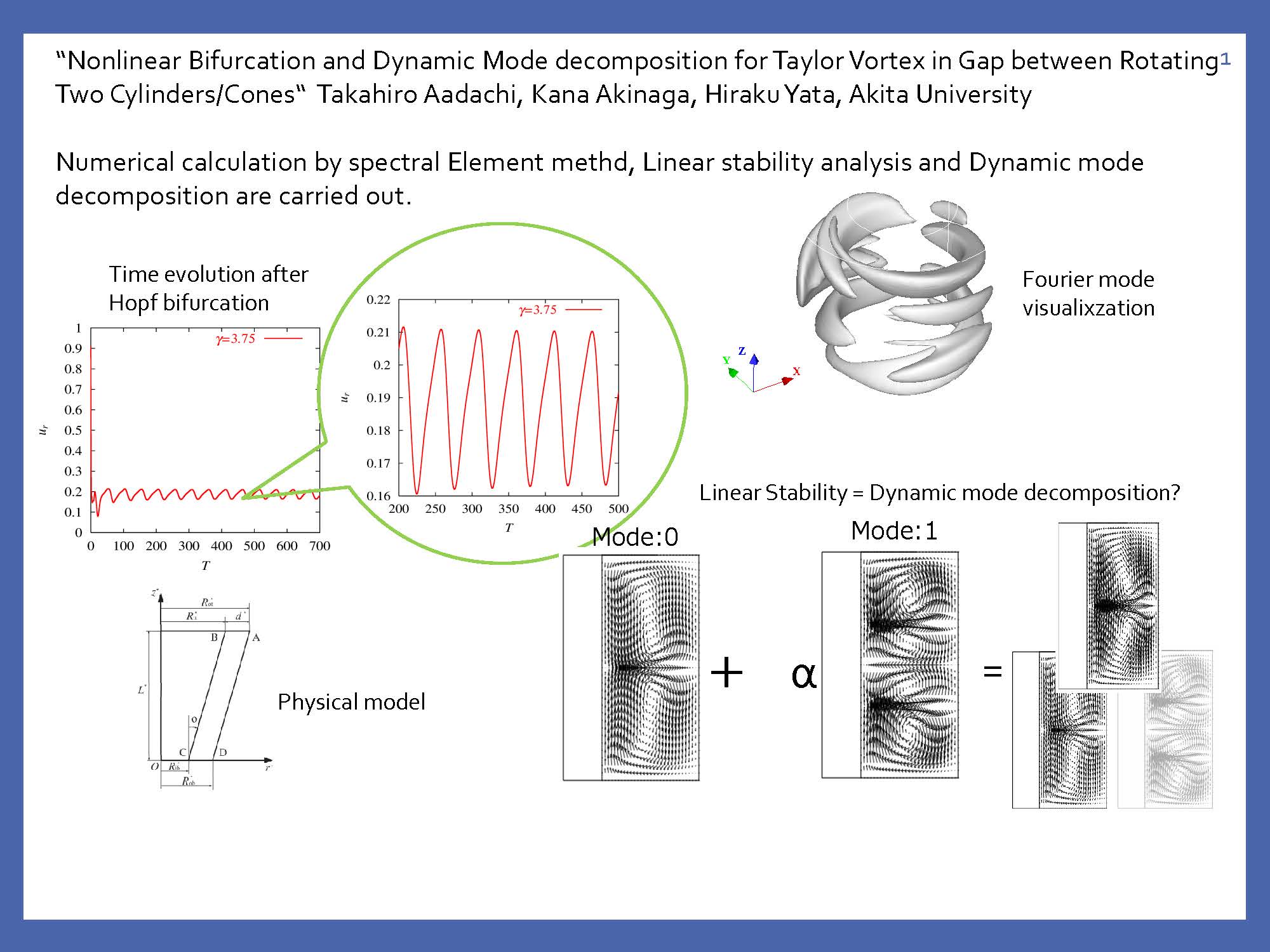
-
Monitoring eukaryotic cell functions under various hypoxic conditions with microfluidic differential oxygenators
Jean-Paul RIEU
University Claude Bernard Lyon 1We develop microfluidic tools to study directed migration toward oxygen (aerotaxis) and oxygen-dependent active movement (aerokinesis) of eukaryotic cells. Our devices enable a precise control of the oxygen gradient in the 0-21% O2 range. We measured an exceptionally quick and massive aerotactic and aerokinetic responses of the social amoeba Dictyostelium discoideum for oxygen level of <2% O2 and we found that mitochondria, oxidative and nitrosative stresses are not involved in aerotaxis.
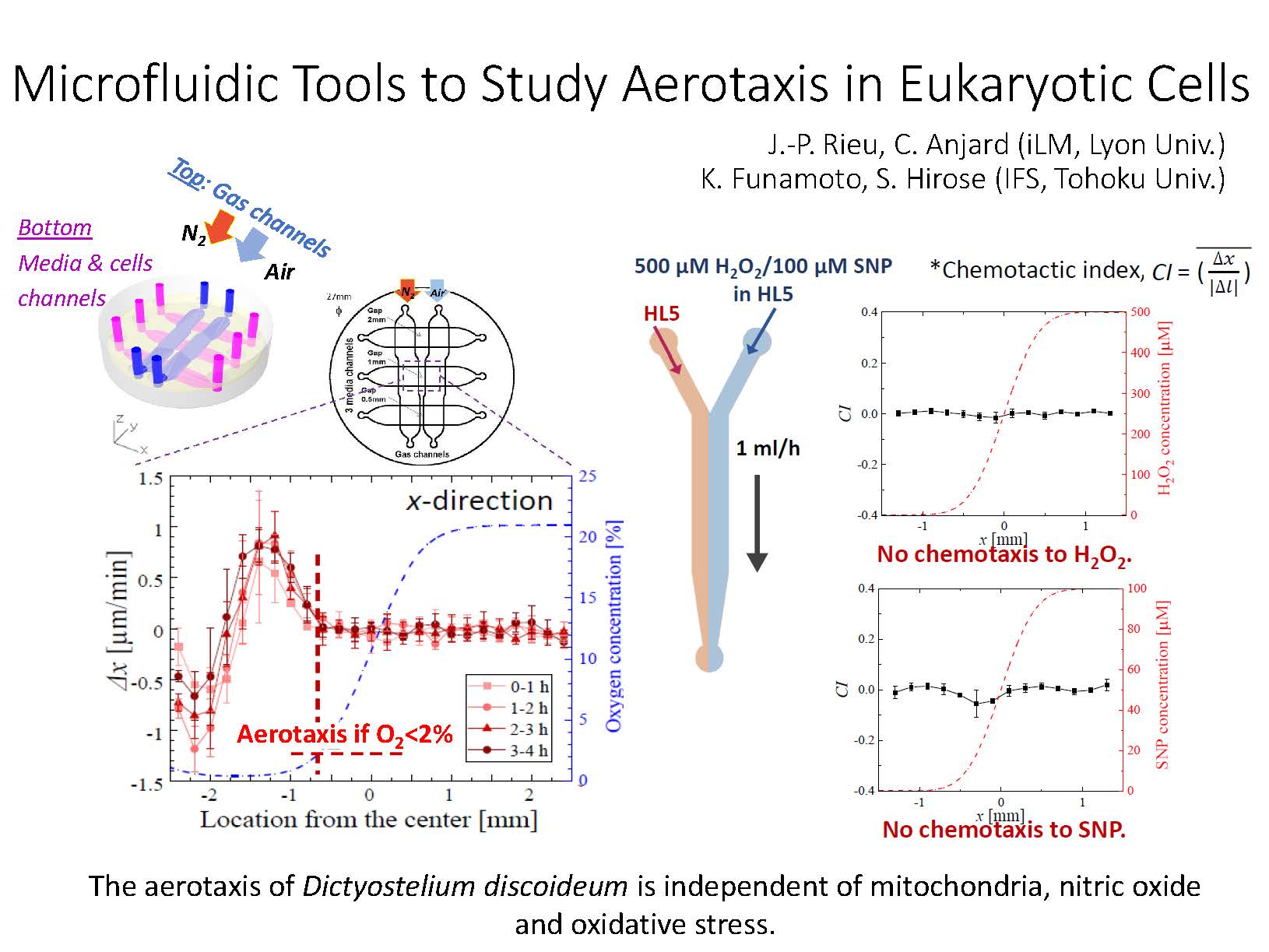
-
Coupled Analysis Approach to Integrated Multiphase Energy Systems
Jun ISHIMOTO
Institute of Fluid Science, Tohoku UniversityThis research focuses on reactive hydrogen leakage due to the fracturing of high-pressure hydrogen tanks to develop a coupled computing method that can simultaneously perform reactive fluid-structure interaction analyses. The integrated computational approach to reactive hydrogen leakage with combustion due to wall crack propagation was implemented using a hybrid of the coupled particle and Eulerian methods. This computational method provides valuable safety information for predicting crack propagation and hydrogen leakage with combustion reaction in pressure tanks as an essential part of assessing hydrogen as an energy vector. As a result, the effect of crack formation and wall boundary conditions on hydrogen turbulent diffusion and concentration distribution and the thermodynamic behavior of the chemical reaction were predicted computationally. It was found that a combustion reaction does not occur near the streamwise axis at the duct center because there is an excess of hydrogen fuel, which increases scalar dissipation, and that the combustion reaction separated into upper and lower regions as it proceeded.
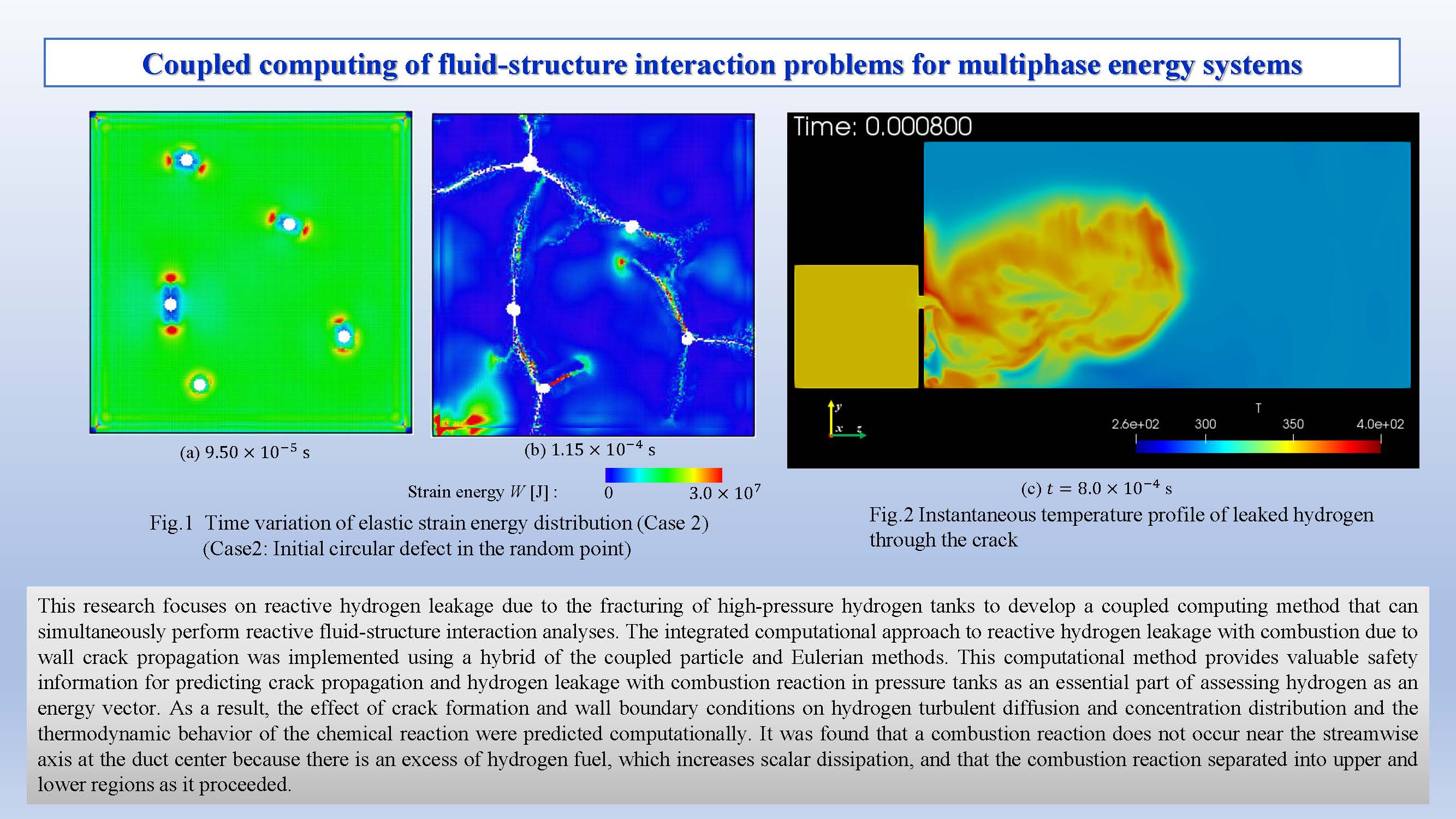
-
Investigation of a predictive therapeutic response under controlled oxygen condition in cancer patient-derived organoids
Nicolas AZNAR
Cancer Research Center of LyonWe validated 3D cell culture spheroid conditions for cancer stem cell markers expression and have shown that hypoxic condition not only decreases spheroid growth but also confers spheroid resistance to conventional therapy. In parallel, we optimized colorectal cancer patient-derived organoid cultures from fresh tumors and designed an innovative 3D cell culture system combined with oxygen gradient for better in vitro disease modeling and more robust drug testing.
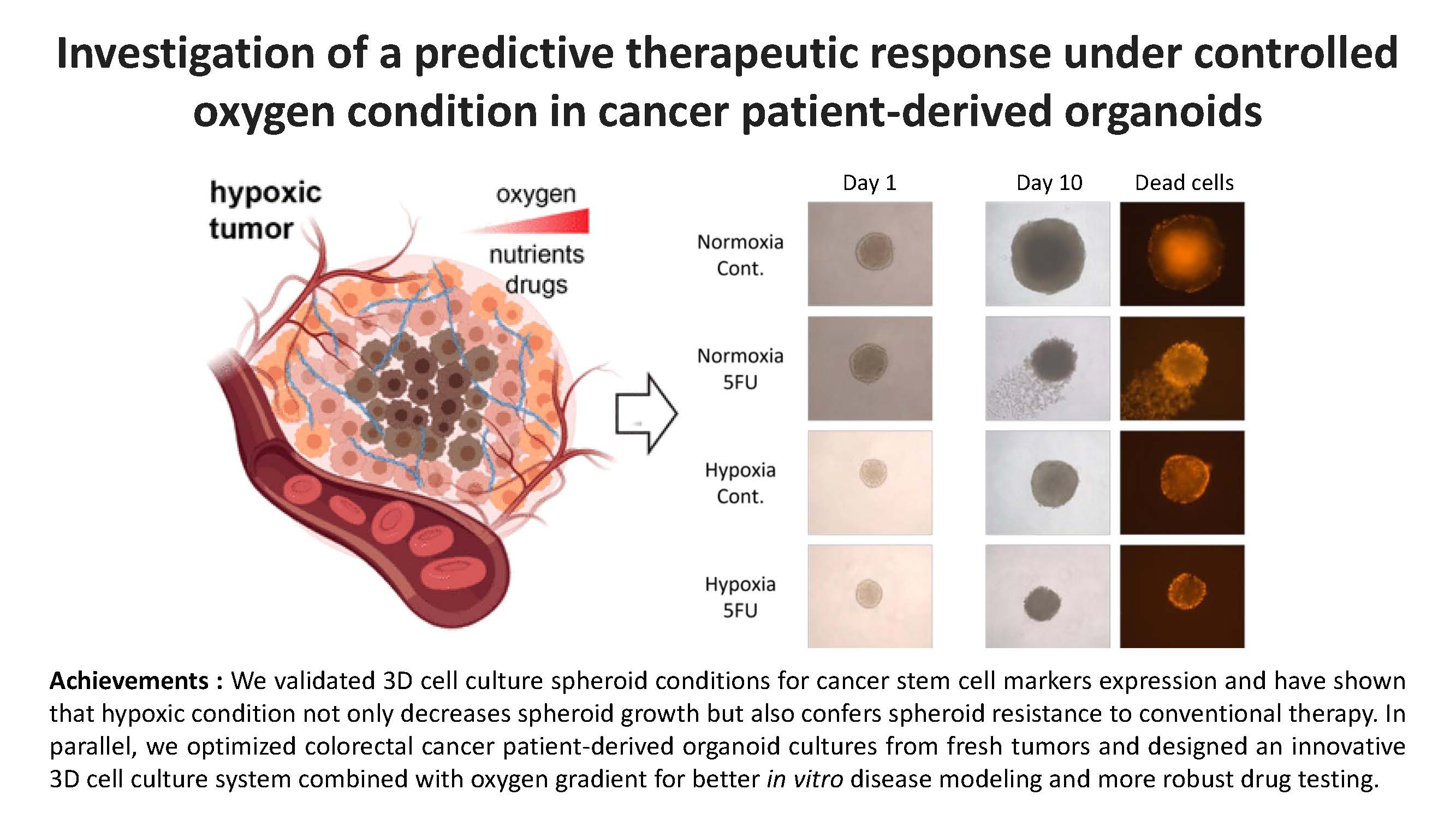
-
Active Control of Protein Mass Transfer by Membranes with Various Pore Patterns
Atsuki KOMIYA
Institute of Fluid Science, Tohoku UniversityThis collaborative research focuses on the evaluation of the effect of macropores patterning on protein hindered diffusion process. The experimental results reveal that the patterning and configuration of macropores would be able to control mass flux passing through the membrane. This shows a possibility of active control of protein mass transfer by the membrane.
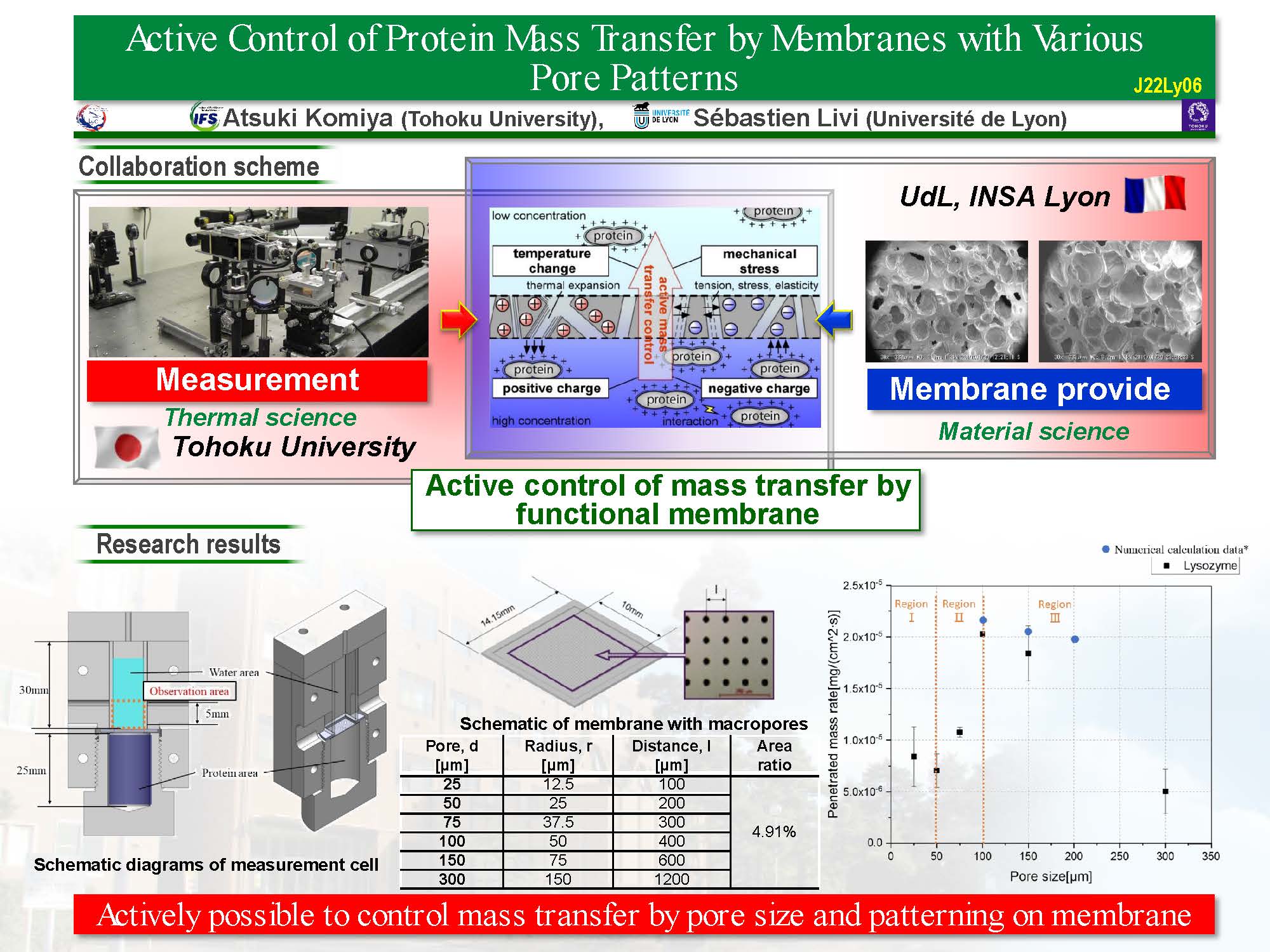
-
Coplanar sensor as solution to detect water uptake on polymer materials
Nicolas MARY
INSA LyonThis work deals with the elaboration of a coplanar sensor able to determine the relavite permittivity of materials. NDT signals (Vx and Vy) were recorded and a good linear correlation was founded between the Vy parameter and the known relative permittivity of tested materials. These results confirm that the coplanar sensor is appropriate to discuss the relative permittivity evolution of polymers submitted to water uptake.
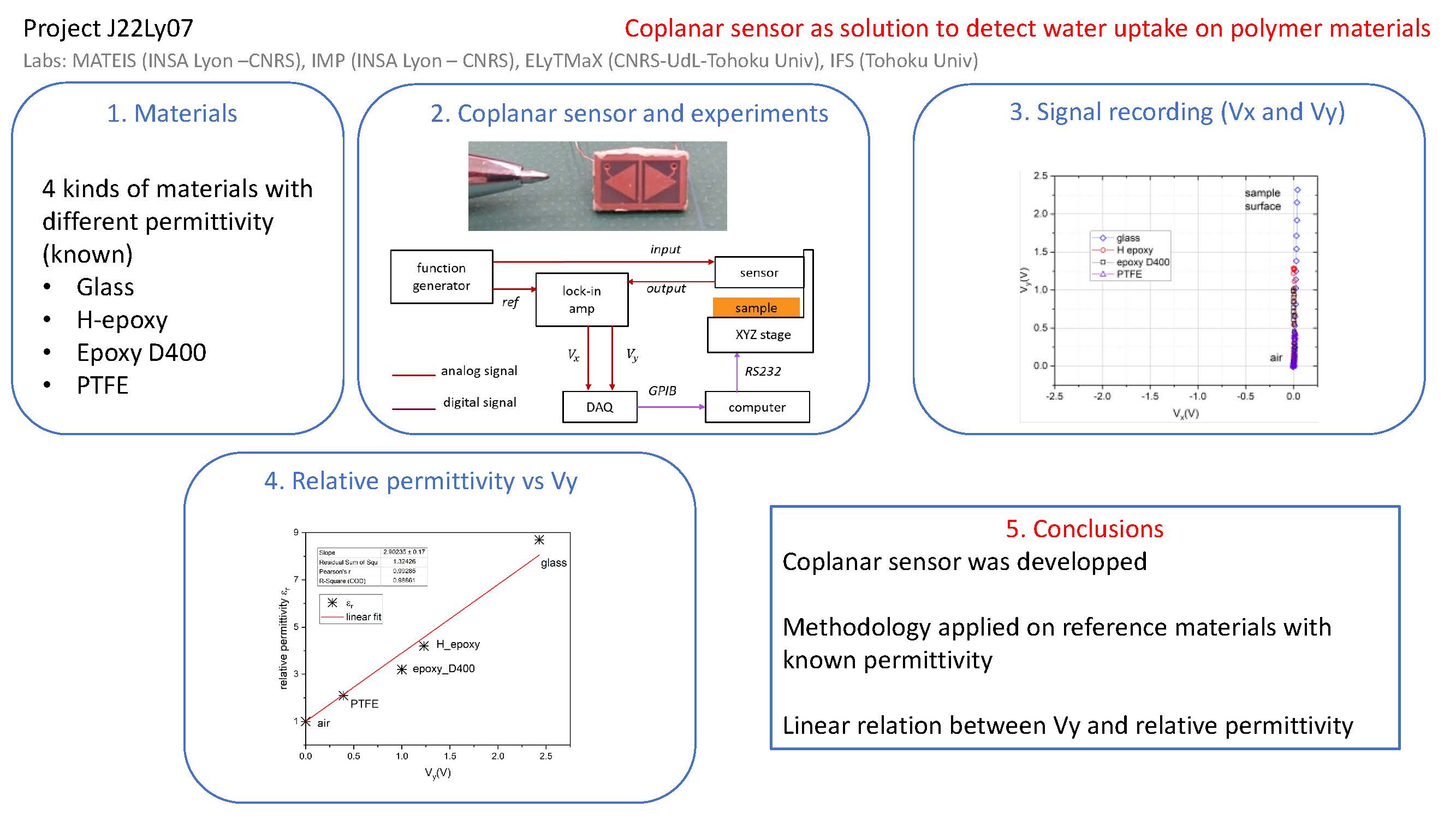
-
Multiscale simulation of Carbon electromigration in iron
Takashi TOKUMASU
Institute of Fluid Science, Tohoku UniversityThe purpose of this study is to analyze the electromigration of carbon in iron and the phase transformation induced by electromigration of iron. In this study, a new potential was introduced and a simulation system was constructed. In order to validate the constructed potentials, we calculated the diffusion coefficient of carbon in iron.
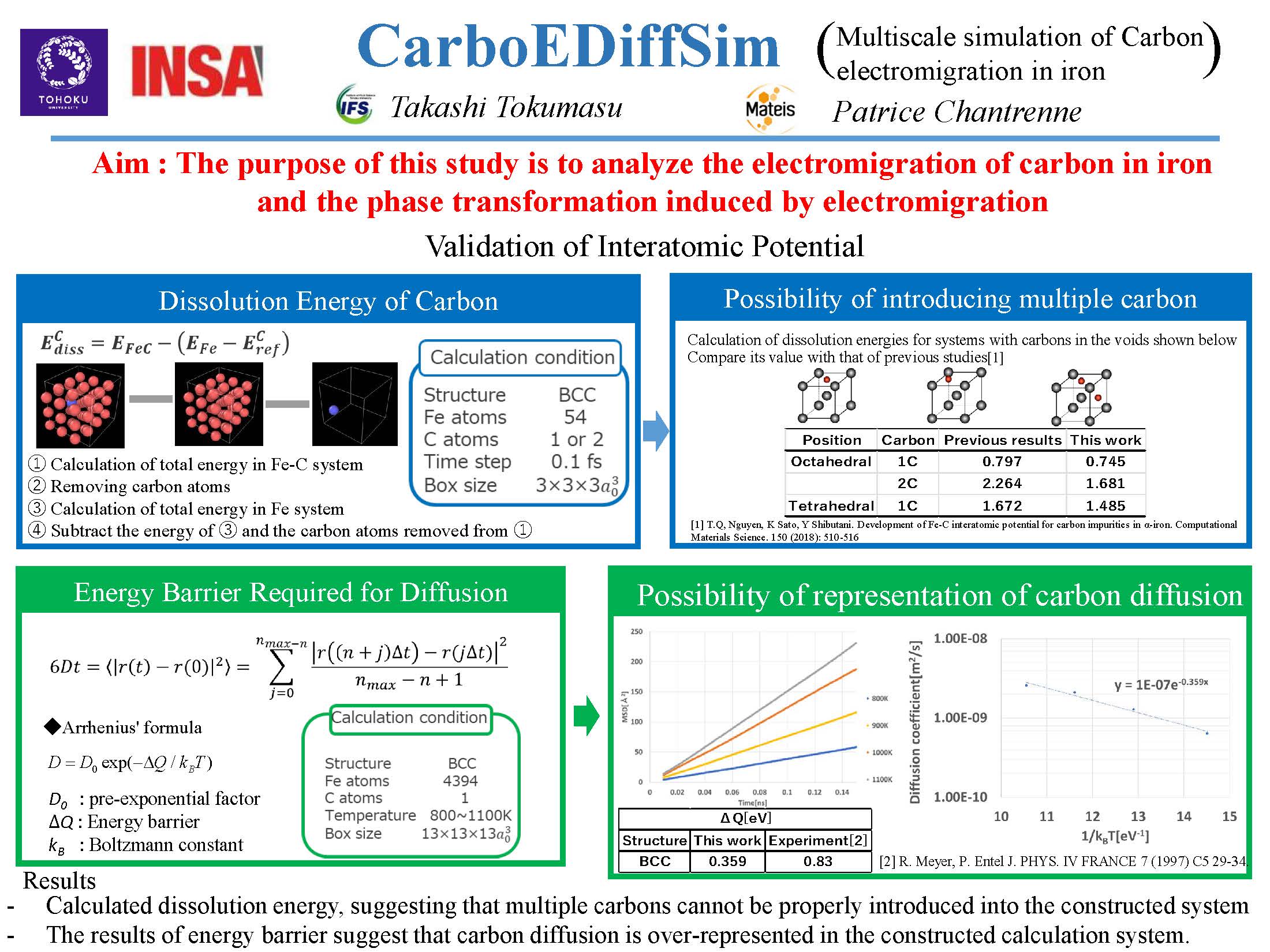
-
Numerical modelling of the particle temperature evolution during cold-spray process
Chrystelle BERNARD
Frontier Research Institute for Interdisciplinary Sciences, Tohoku UniversityDuring the cold spray process, the surrounding gas accelerates and heats the particles. Knowledge of the particle history during its flight is of primordial importance for better understanding the particle impact on the substrate, in particular for polymers which are highly strain rate and temperature sensitive materials. Thus, the presence of a thermal gradient will induce a gradient of mechanical properties needed to be considered for a better understanding of the particle impact.
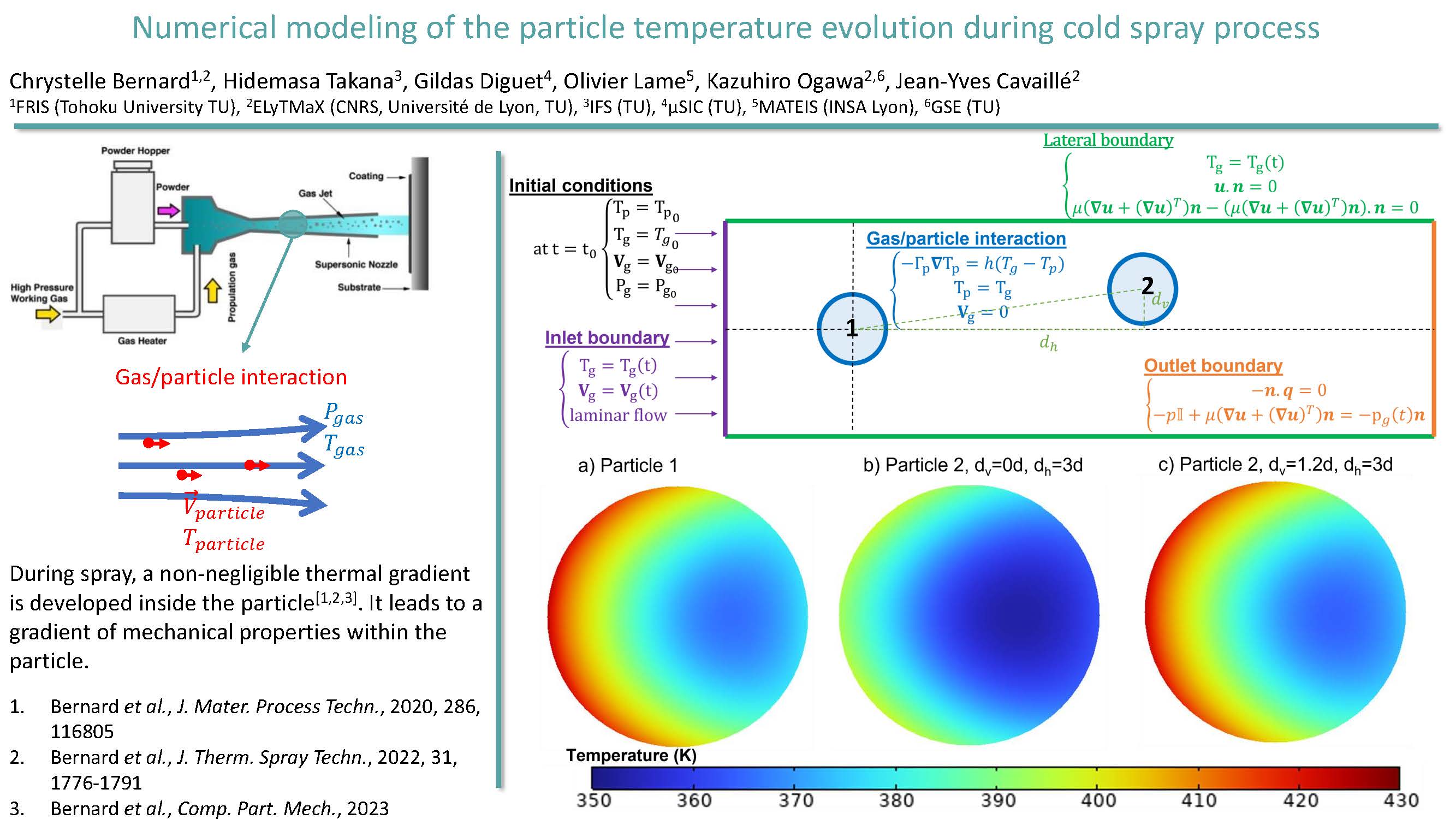
-
Stability of jet diffusion flames cofiring with carbon-free ammonia
Sophie Valerie Anne COLSON
Institute of Fluid Science, Tohoku UniversityIn the context of the decarbonization of the industry, the use of ammonia as a fuel is considered. This study focuses on determining the effects of ammonia addition on a methane non-premixed flame. The numerical modeling of an ammonia/methane jet diffusion flame studied experimentally in the framework of this collaboration is performed to investigate the flame structure and pollutants formation.
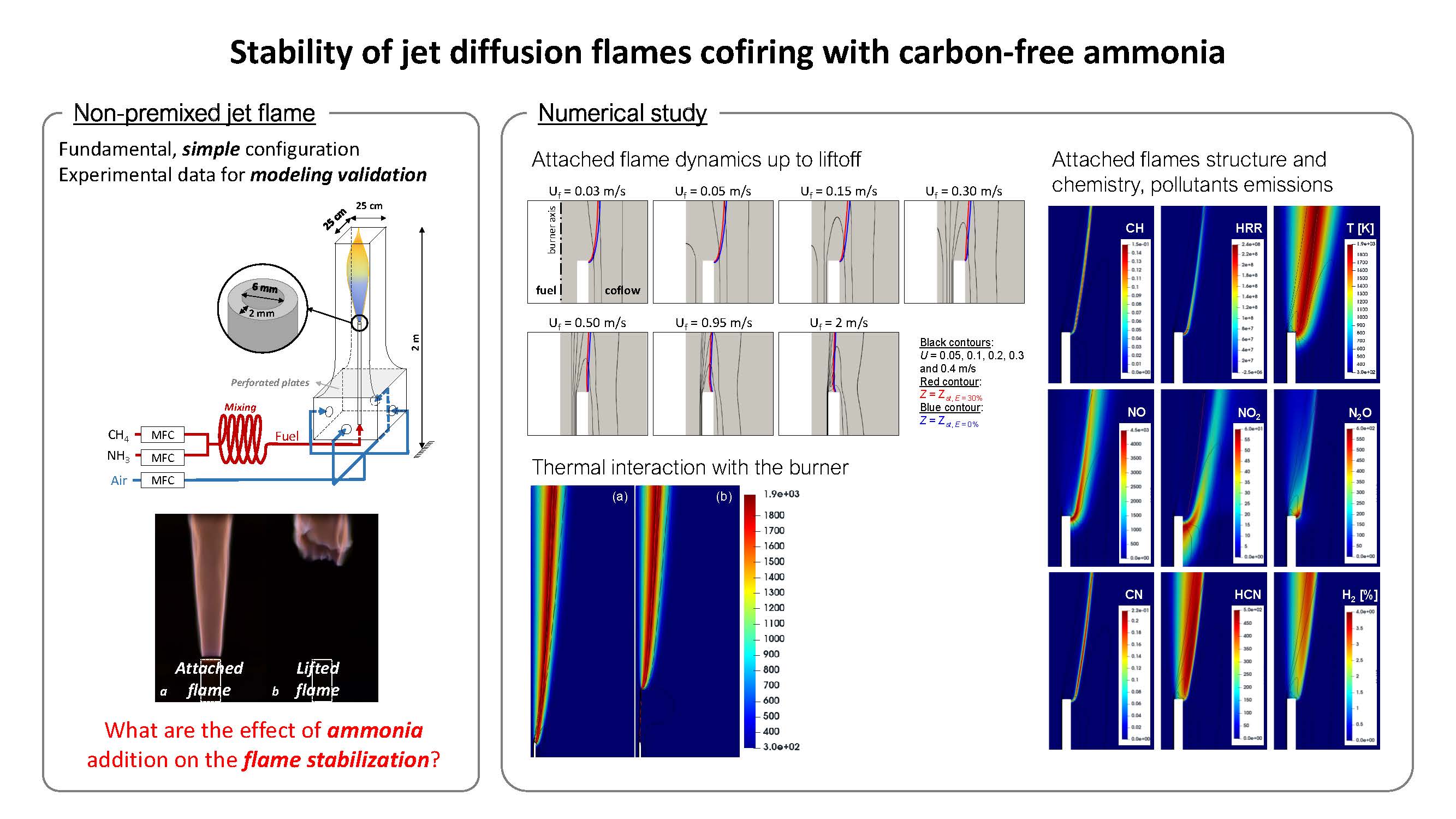
-
Robust Shape optimization of vibro-acoustic cavity
Frédéric GILLOT
Ecole Centrale de Lyon -
MACASH (MAgnetostrictive Composites for Application in Sensing and Harvesting)
Hiroki KURITA
Graduate School of Environmental Studies, Tohoku UniversityPU-FeCoV soft composite sheets were successfully fabricated. However, the magnetic properties of the PU-FeCoV soft composite sheet could not be accurately evaluated. To evaluate the magnetic properties of the fabricated PU-FeCoV soft composite sheets, we will use high-power electromagnets owned by Tohoku University.
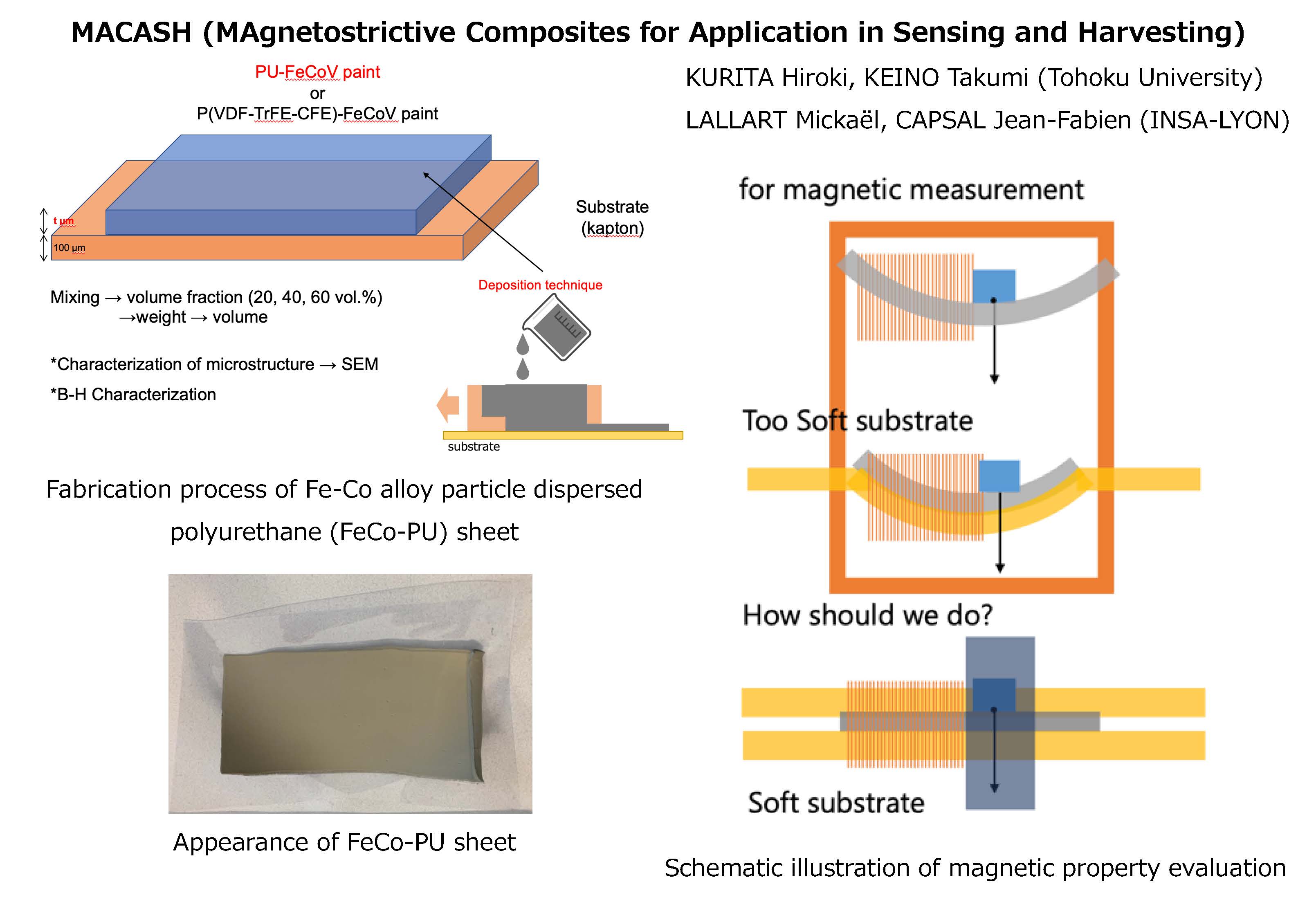
-
Strengthening mechanism of TiC particle reinforced Al matrix composite
Hiroki KURITA
Graduate School of Environmental Studies, Tohoku UniversityAl powder and B4C particles were mixed at the nano-level by wet shear process (WSP) and underwater counter collision (ACC) to obtain an Al-B4C composite material with high tensile strength and elongation at break. We plan to submit the paper to an English-language peer-reviewed journal.
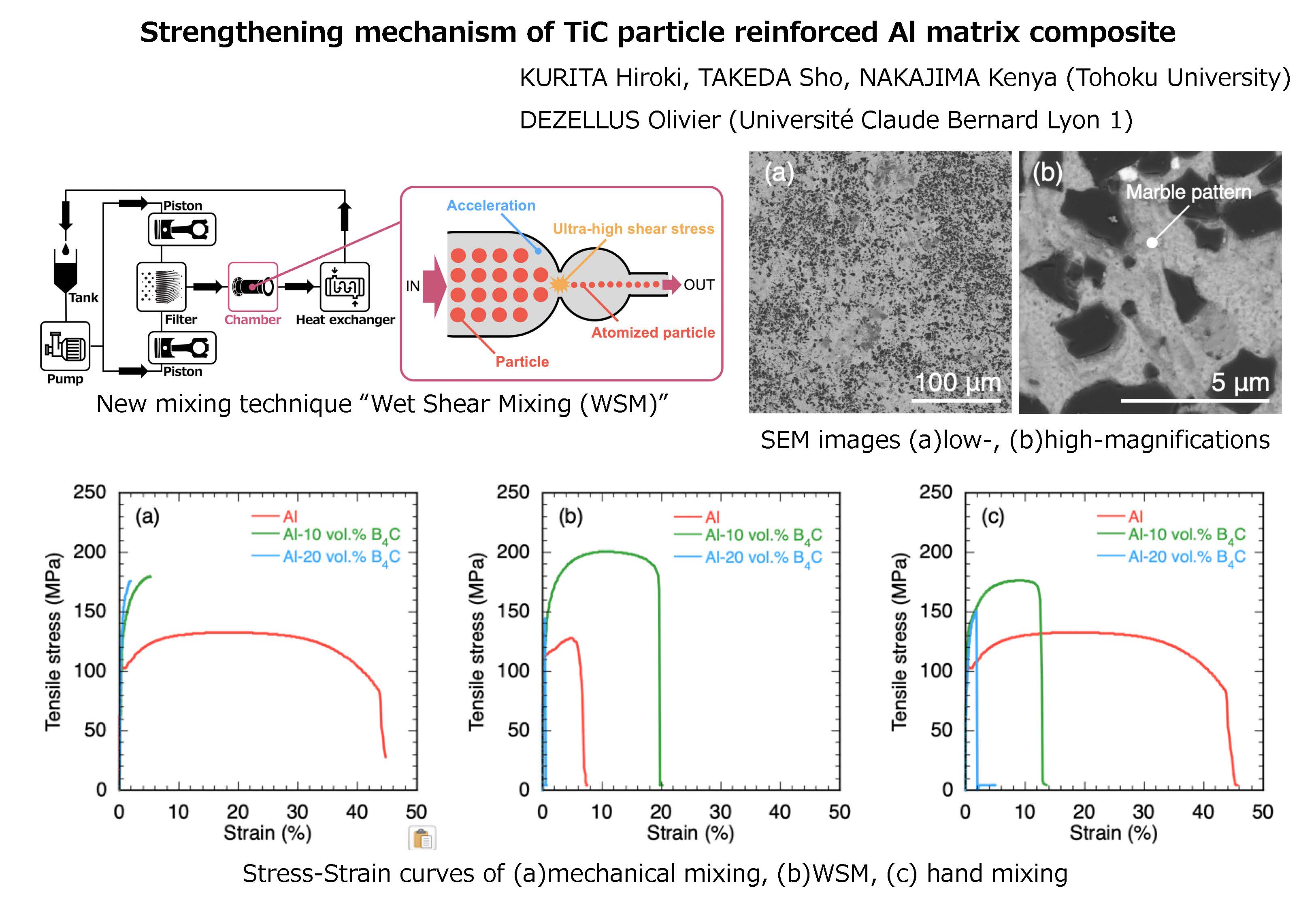
-
Theory for Electrostriction of PolymeRic Actuator (TEmPuRA)
Gildas COATIVY
INSA LyonWe have developed epoxy-amine model materials, doped or undoped with ionic liquids (ILs). Our results show that conductivity increases with the addition of ILs and that the presence of ions is responsible for the material's ability to bend under a constant electric field. The next step will be to study the impact of the nature and quantity of ILs on the electroactuation of epoxy-amine materials.
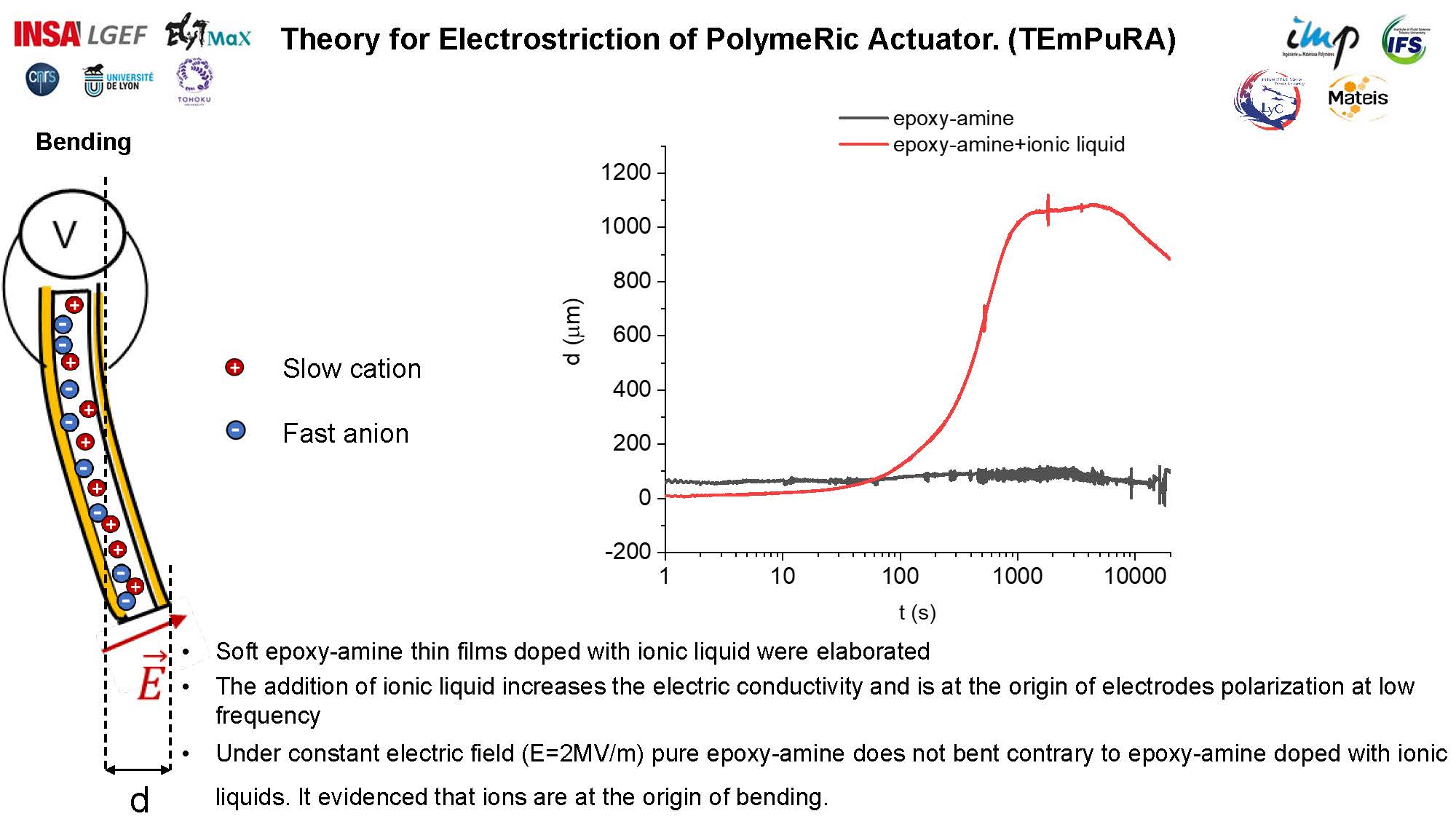
-
Blood flOw Simulation for Medical Applications (BOSMA)
Carole FRINDEL
INSA Lyon -
Atmospheric turbulence affecting airplane investigated by global stability analysis
Aiko YAKENO
Institute of Fluid Science, Tohoku UniversityWe investigate the transition process of KH (Kelvin-Helmholtz) instability waves induced by realistic atmospheric shear profiles. The results suggest: (1) the most unstable structure is stream-wise vortex tubes between two KH vortices, as presented in past theoretical analyses on simple tanh-shape profiles. (2) the growth rates depend on the wavenumber of the vortex tubes.
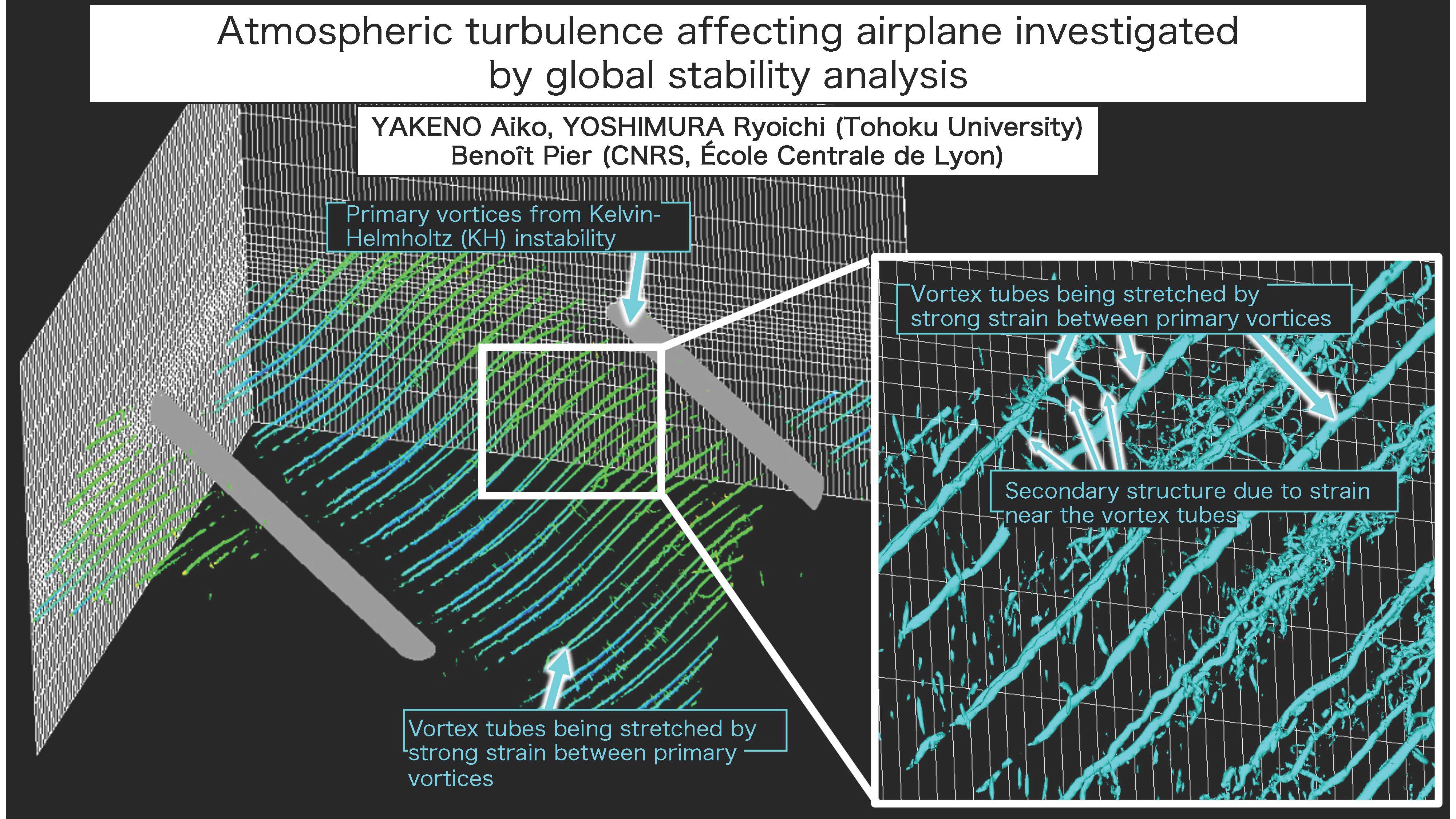
-
Modal approach for extracting flow structure related to the subsonic jet noise generation
Aiko YAKENO
Institute of Fluid Science, Tohoku UniversityThis study aims to clarify the noise generation mechanism of a high-speed subsonic jet. Numerical experiments were conducted to investigate the receptivity of the two-dimensional jet flow by placing a point source imitating the jet noise generation, revealing that there is a peculiar frequency St=0.2 that strongly affects the jet flow.
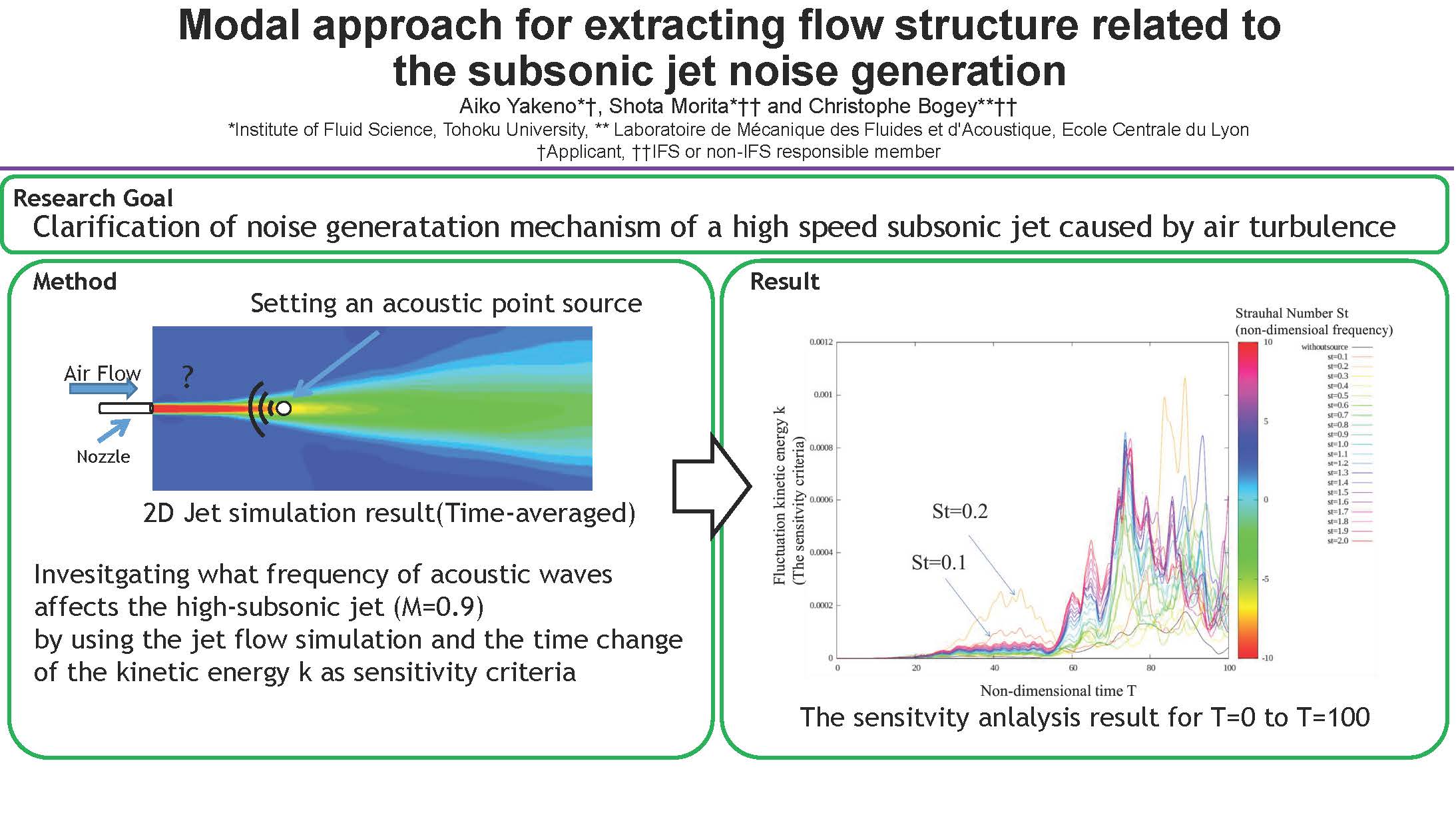
-
Skyrmion stability under mechanical strains and material deformations
Fumitake KATO
National Institute of Technology, Ibaraki CollegeWe numerically study a geometric confinement (GC) model for skyrmions and find that the GC effect improves the skrmion stabilization under uniaxial strains. The combining effect increases the skyrmion area in the phase diagram of magnetic field B and Temperature T, where the increase in the skyrmion area is consistent with reported experimental data of Cu2OSeO3.
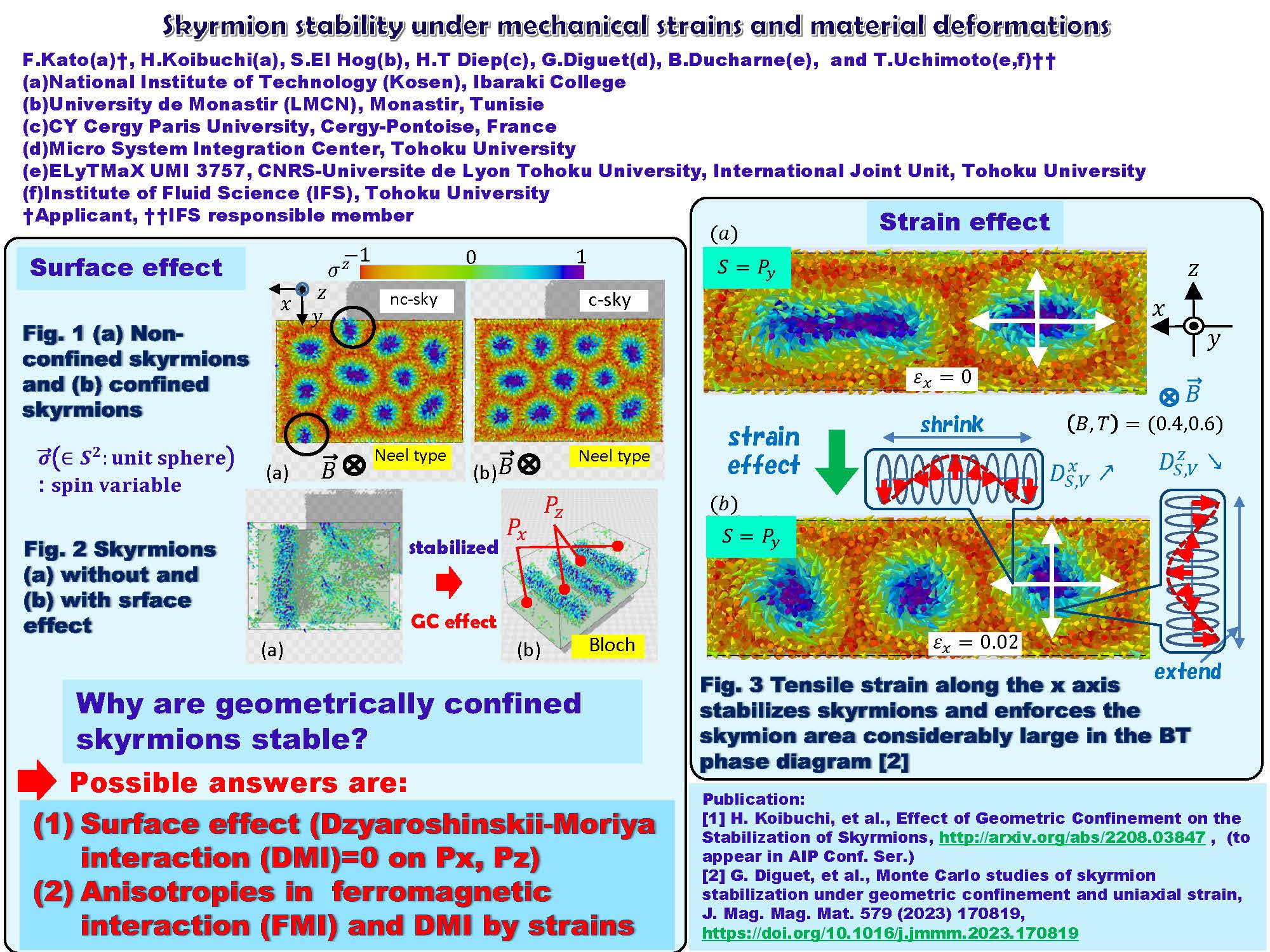
-
Finsler geometry modeling of Turing patterns and protoplasmic streaming
Fumitake KATO
National Institute of Technology, Ibaraki CollegeWe numerically study anisotropic Turing patterns such as those observed on zebra and fishes to find the origin of anisotropic diffusions using Finsler geometry modeling. In this modeling, anisotropic diffusions are dynamically implemented by assuming cell fluctuations, and the implemented anisotropy is controllable with external conditions such as uniaxial strains.
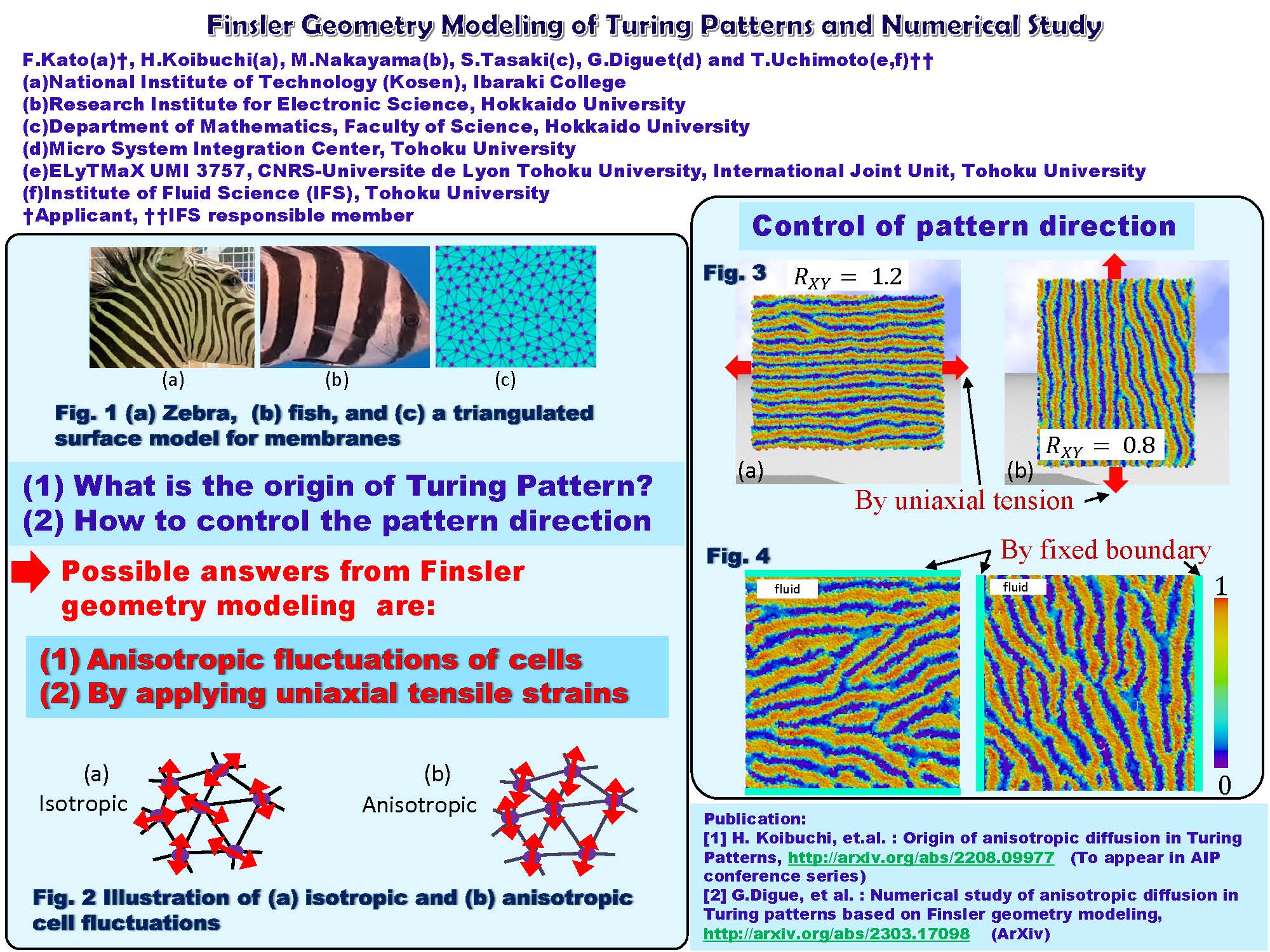
-
Corrosion characterization for pipe wall by ultrasonic wave
Hiroyuki NAKAMOTO
Kobe UniversityA method for evaluating the roughness of the inner surface of a pipe based on the attenuation of ultrasonic waves was investigated. The rough surface reduced the specific frequency spectrum of the reflected wave in both the experiment and simulation.
